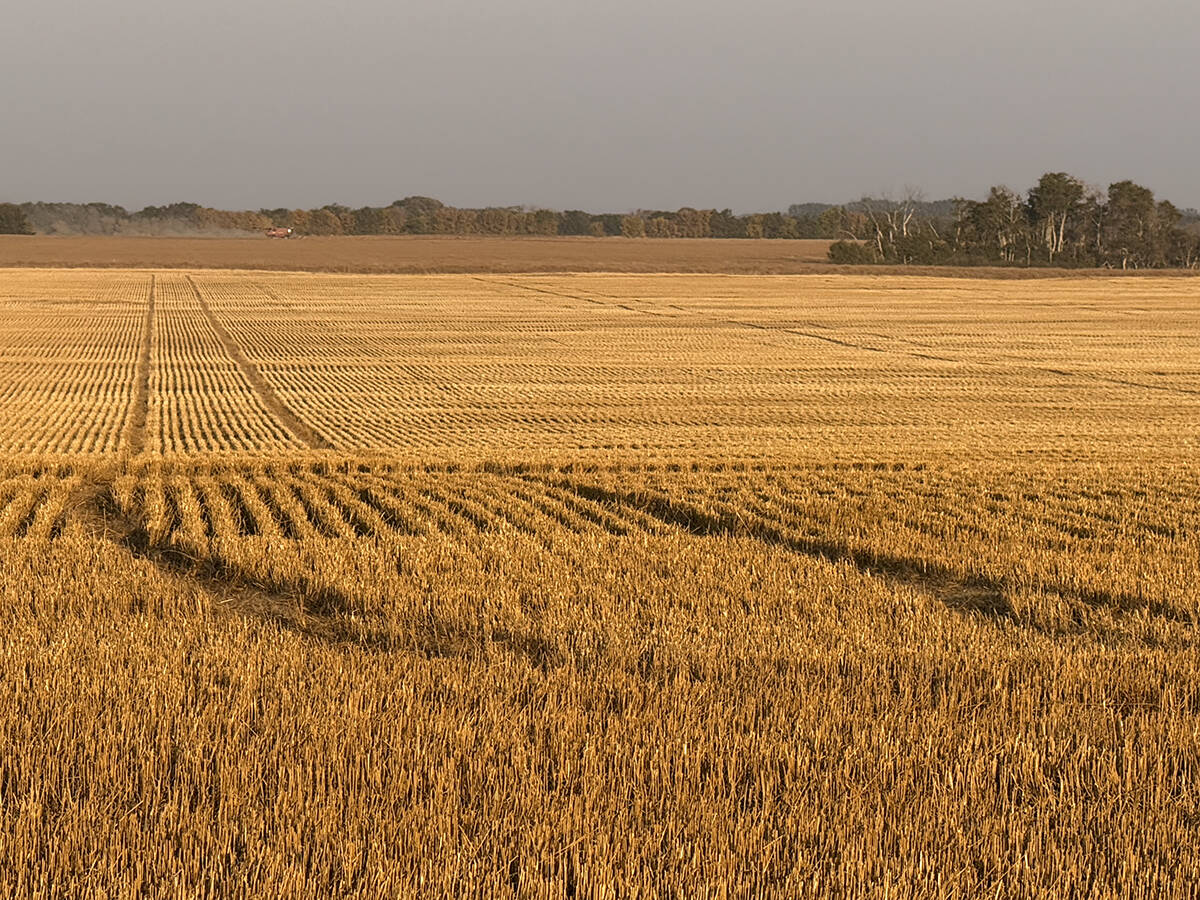After two years of study, researchers are concluding that cover crops are essential if a farmer wants black ink in the accounts ledger, a sure sign that the operation is profitable.
“What people care about is the colour of their ink,” said Jared Carlberg, during a presentation on the economics of legume cover cropping in southern Manitoba at Ag Days held in Brandon Jan. 19-21.
Science proved some time ago that adding a legume cover crop to a rotation can boost nitrogen levels and improve soil health.
Read Also

Final crop reports show strong yields, quality
Crops yielded above average across the Prairies this year, and quality is generally average to above-average.
But farmers need to know what that means for their bottom line, said Carlberg, an associate professor of agricultural economics at the University of Manitoba.
The research by Carlberg and master’s student Ashleigh McLellan was conducted through computer modelling rather than test plots or field trials.
It found that a rotation of winter wheat, a cover crop of black lentils, oats and canola is profitable 88 percent of the time. In comparison, a rotation of field peas, spring wheat, oats and canola produces a profit 60 percent of the time.
McLellan, who studied the economics of cover crops for her master’s thesis, said the consistent profitability of the cover crop rotation was surprising.
“I did expect this (rotation) to do better, I don’t think I expected it to be that much better,” said McLellan.
She noted the consistent profitability is connected to not harvesting the black lentils.
“The black lentil crop … it just gets left on the soil so more nitrogen gets put back into the soil. It’s not removed at harvest time, so I think that’s why we see the big difference because so much more nitrogen is added to the soil,” she said.
McLellan considered four rotations for her thesis: the black lentils and pea rotations, along with a spring wheat, oats and canola rotation and a peas, spring wheat and oats rotation.
The computer model assumed the crops were grown on a hypothetical farm near Carman, Man. McLellan then had the computer simulate 1,000 scenarios, adjusting variables such as price, yield, nitrogen cost and nitrogen contribution of the cover crop.
Crop prices for the model were based on Canadian Wheat Board data and statistics from Manitoba Agriculture. The nitrogen prices came from Statistics Canada, yields from the Manitoba Agricultural Services Corporation and production costs from Manitoba Agriculture.
After 1,000 iterations, the computer model showed that the black lentils rotation consistently outperformed the others, producing a mean average profit of $103,229. The wheat, oats and canola rotation returned a mean profit of $69,176.
The field pea rotations were the lowest ranked. Peas with spring wheat, oats and canola produced a mean profit of $24,201. Peas, spring wheat and oats generated a mean profit of $11,947.
Carlberg insisted the results from the computer simulation are valid.
He and McLellan worked with a cover crop specialist and plant scientist and consulted a risk analysis expert to validate that aspect of the model.
“In my mind, there’s no question that the results are correct and robust to a variety of assumptions, regarding crop yields, prices and input costs,” Carlberg said.
While he’s confident in the results, he added they are limited to soil conditions in southern Manitoba.















